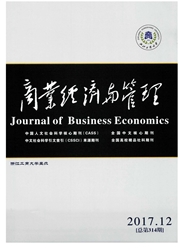

 中文摘要:
中文摘要:
国际金融危机的爆发引发了理论界对货币政策是否影响银行体系稳定问题的更为广泛的关注。文章基于异质性视角构建动态面板数据模型对货币政策与银行风险承担行为之间的关系进行估计,研究结果表明:2003-2011年,货币政策变量对银行风险偏好的影响具有时滞性,贷款利率提高有助于抑制银行风险,货币供应量增加会刺激银行更加冒险;不同银行对货币政策冲击会做出异质反应,随着资本充足率的提高,货币政策对银行风险承担行为的影响效果减弱。因此,加强中国人民银行在宏观审慎监管中的主导作用、建立逆周期的货币政策和资本监管协调机制是后金融危机时代我国监管当局的重要议题。
 英文摘要:
英文摘要:
Lots of attention has been paid to whether monetary policy can influence banking system stability in the aftermath of the global financial crisis. By using a dynamic panel data model, this paper analyzes how monetary policy affect bank risk taking based on the perspective of heterogeneity. The results show that the impact of monetary policy variables on bank's risk preference exhibits strong time lag from 2003 to 2011; high lending rate would inhibit bank risk; but the increasing of money supply would stimulate greater risk-taking. The distributional effects of monetary policy on bank risk-taking due to individual bank characteristics revealed that the impact of monetary policy on risk assets was diminished for banks with higher capital adequacy. Therefore, how to strengthen the leading role of the central bank in macro prudential management and construct coordination mechanism between the countercyclical monetary policy and capital regulation becomes a key issue of the Chinese regulatory authorities in the post-financial crisis era.
 同期刊论文项目
同期刊论文项目
 同项目期刊论文
同项目期刊论文
 期刊信息
期刊信息
